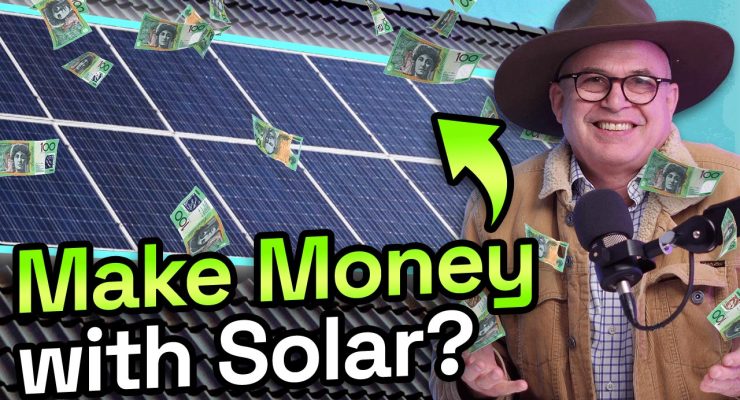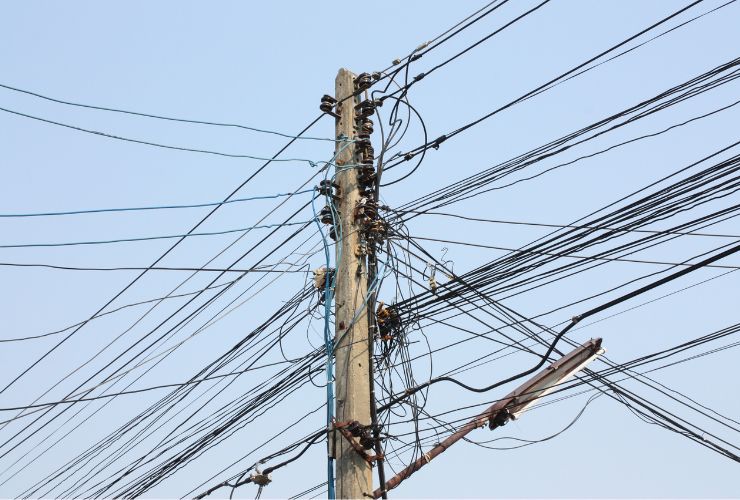
Fast read
The three main ways solar energy systems can create revenue are:
1) A government rebate on solar system purchases.
2) You will get electricity bill savings from producing electricity via solar for consumption in the home
3) You will, in most cases, be paid for excess electricity exported to the grid. This income is called the Feed in Tariff (FiT).
In Australia, homeowners have access to government rebates that can reduce the overall cost of a solar system. Utilising the electricity produced by the system rather than buying it from the grid results in lower electricity costs.
The FIT compensates homeowners who export extra electricity to the grid. This can be shown on their regular electricity bill.
Can you make money with a solar panel system?
People often wonder about the specifics of making money with a solar system. Three primary ways to make money with solar exist.
Rebates and incentives exist. These financial benefits, usually provided by government or utility programs, help lower the upfront installation costs and continue to offer ongoing support.
The second way to make money with solar involves electricity savings. By generating my own power, I significantly reduce dependence on the traditional grid, resulting in substantial long-term savings and fostering a more sustainable energy consumption model.
Lastly, there’s the income derived from Exporting Surplus Electricity. The excess energy from my solar system is sent back to the grid. This helps me earn money and improves the financial benefits of my solar investment.
1. Money towards the purchase of a solar system
The first one is when you initially purchase the solar system. The Federal Government will give you a rebate towards the purchase and installation of the system. Usually, when the installers quote you a price, this price has already gotten the rebate taken off.
So if they say it’s a $7,000 PV system, and you know that you qualify for about $2,000 in rebate, don’t expect to be out of pocket by five thousand dollars. You were out of pocket by nine thousand, and the two grand rebates have already been taken off the overall price, keeping cash in your money box.
Anybody in Australia can get that as long as they are a homeowner. The rebate was high a decade ago and is reduced yearly on the 31st of December. You can get between two and $3,000 in restitution for the average system.
Your installer will give you closer details on the amount you qualify for the government rebate. You can also check out our rebate calculator to know the available amount.
2. Saving on electricity bills and avoiding CO2 generation
The electricity that your system generates and that you use in your house is electricity one does not need to pull off the grid and pay for. If you are buying electricity, let’s say at 30 cents per kilowatt hour, your solar system generates that electricity in the middle of the day. Naturally, your electric bill will be lower.
While nobody is giving you physical money for that, you’re offsetting the cost you usually pay for the electricity out of the grid. This will give you a lower average electricity bill per month.
3. Getting paid for the electricity you generate and sending it back into the grid
The Feed in Tariff (FIT) is the third way to make money with solar. The FIT covers the electricity that you physically generate and export.
In the middle of the day, your 6.6-kilowatt system generates five kilowatts for the next hour. And you are only in the house using two-kilowatt hours. So there are three kilowatt hours that your system generates that you’re not operating within the home.
This electricity then enters the inverter and gets exported into the grid for others in your neighbourhood to use. And then, it gets measured, and your three kilowatts may be worth 10 cents per kilowatt hour.
So even if you pay 30 cents per kW/h to get the electricity from the grid, they might pay you only 10 cents for each 3 kWh.
The FIT amount is recorded in your regular electricity bill.

Example
In a particular example, let’s say we have exported a hundred dollars worth of electricity (FiT of 10 cents per kWh), meaning we exported 1000 kWh in three months.
At the same time, we used after-hours 1000 kWh. But we pay 30 cents for each kWh of imported electricity in this instance.
So the electricity bill electricity component will consist of $300 in electricity kWh charges. With $100 in FiT credits, a final bill of $200 plus the service supply charge component was generated.
As you can see, there are three ways that solar can make you money.
- I receive a valuable rebate, enhancing the cost-effectiveness of my solar system. This means I get financial benefits, making my investment even more rewarding.
- I don’t incur any expenses for the electricity generated by my solar system. This translates to significant savings on my energy bills, contributing to long-term financial efficiency.
- The surplus electricity generated by my system is exported, allowing me to earn a little extra money. This not only supports sustainable living but also provides a small income stream, making my solar investment even more impactful.


